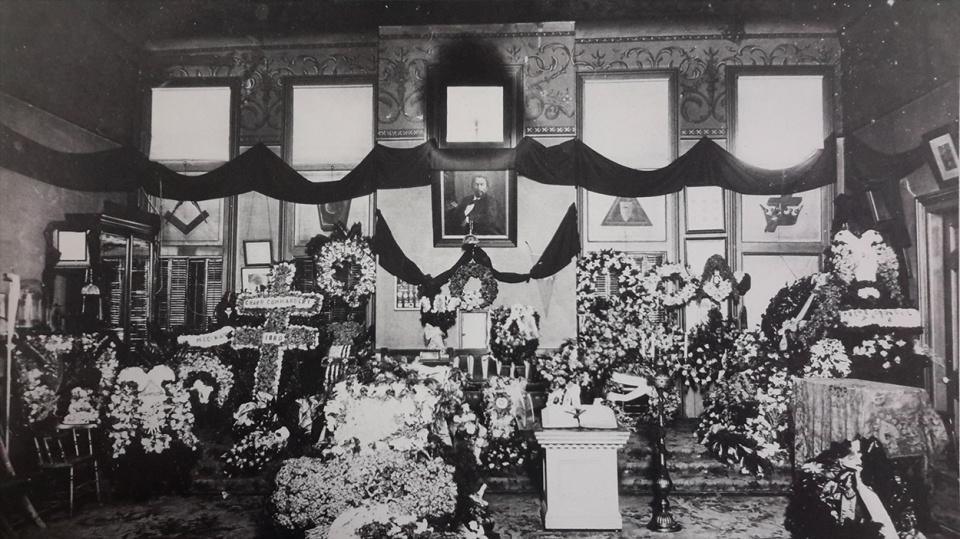Ely Parker was a Seneca Indian of noble descent born in Indian Falls, New York in 1828. He was from the Tonawanda Reservation of Western New York State. His Indian birth name was Ha-sa-no-an-da. Parker had an encyclopedic mind and was extremely intelligent. His grandmother had been white, which may have promoted his interest in learning about the white man’s culture.
Educated by white teachers at the local Baptist school, Parker went on to study law. Unfortunately, he was unable to gain admittance to the bar exam because only naturalized United States citizens could be accepted. And at that time, Native Americans were not considered American citizens under New York law. In 1851, Parker was proclaimed Grand Sachem by his tribe. He became the leader of the Iroquois Confederacy for the western part of New York State.
The impressive 200-pound Indian began working on the Genesee Valley Canal. He learned engineering skills while on the job and in 1853 became a ‘captain of engineers’ in the New York State Militia. Parker’s Iroquois title was “Donehogawa,” indicating he dealt with outsiders. As a teenager he was one of the three Native Americans who met with President James Polk to discuss grievances over the sale of reservation land.
Before the war had started, Parker was superintendent of government building construction in Galena and Dubuque. It is during this time he made important friendships with Ulysses S. Grant and John E. Smith. He was also appointed by the Treasure Department to supervise the construction of a custom house and marine hospital in Galena. When he began work on the Custom House he found that the local stones were not suitable for this type of construction. He visited various quarries in surrounding areas, and determined that limestone found near the old Mormon Temple of Nauvoo was more suitable. This limestone had to be shipped 200 miles north to Galena before construction could began. (The Custom’s House is seen on the Main Street Tour.)
After the Custom House and Post Office were completed he left the Galena area and was not present during the war meetings held at the Jo Daviess County Courthouse following the firing on Fort Sumter. While in New York he offered his services to the government, but was unable to obtain a commission. He raised a regiment of Iroquois volunteers, however the Governor of New York refused them army admission because, once again, Native Americans were not United States citizens. For that same reason, Parker was denied the opportunity to join the army as an engineer.
However, in 1863, recently appointed Brigadier Gen. John E. Smith, who had known Parker in Galena, wrote a letter to Washington, D.C. recommending that Parker be appointed to his staff. With Grant’s support, in July 1863, Parker reported for duty on Smith’s staff. Two months later, Parker was assigned to the staff of Gen. U. S. Grant as military secretary.
In April of 1865, Gen. Robert E. Lee surrendered to Gen. Grant at Appomattox Court House, Virginia. Because of his background in law, Parker helped draft the surrender documents, and handwrote the official copy of the terms of surrender. Parker was later appointed Brevet Brigadier Gen. of Volunteers on April 9, 1865.
In December of 1867, he married Minnie Orton Sackett (a white woman) in Washington, D. C. The wedding was attended by Ulysses S. Grant, who served as Parker’s best man. Parker and Minnie had one child.
After the war, Parker continued on as Grant’s army secretary. In 1869 President Grant astounded the nation by appointing Parker, a Native American, as Commissioner of Indian Affairs from 1869-71.
Sadly, the Panic of 1873 left Parker financially ruined. He lived many years in poverty before dying in 1895 at the age of 67. His widow was left penniless and with few possessions. Her most valuable possession was one of the manifold (carbon) copies of the letter Parker had written at Appomattox.
Galena citizens held a memorial for Parker in the Masonic Room. (You can see from the picture that it was overflowing with flowers and wreaths.)


